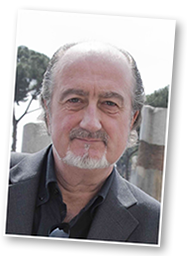One of the people I interviewed while preparing this book is a journalist who specializes in reporting on the media, particularly television. We spoke for half an hour or so about satellite channels, digital platforms and other products of cutting-edge technology. Then just before we parted I mentioned that I was going to Estremadura for a few days. He said he had been born there. But he did not have an Estremaduran accent.
‘No,’ he said. ‘I was brought up in Old Castile. My father was a transhumance shepherd. He used to take the flock down to Estremadura in the summer, which is why I was born there.’ …
This book is about change. What makes contemporary Spain such a fascinating place is the immense, frenetic, sometimes perilous, change that it has undergone and that has, in effect, produced a new country. In less than half a century, a predominantly rural, agricultural society has been transformed into a mainly urban and technological one. A dictatorship has become a democracy. One of the world’s most centralized states has been made into one of the most decentralized. A society that was intensely sexually repressed has become a notably permissive one. There has been a revolution in the roles of men and women. And, just as it seemed as if the pace of change might be dropping off, Spain experienced a surge in immigration that has turned it, in the space of just a few years, into a multi-ethnic society.
Other countries have undergone several of these transformations. But I know of nowhere that has experienced them all – and in such a brief time-span. That impression is borne out by academic research. Since the 1980s, social scientists at universities around the world have been conducting interviews with representative samples of the inhabitants of their respective societies to build up a comparative view of the values they hold. One of the aims of the World Values Survey, as it is known, is to monitor social change by measuring the gap between the attitudes held by people at different points on the age scale.
‘Spain’, according to the project’s chief co-ordinator, Professor Ronald Inglehart of the University of Michigan, ‘shows the largest differences between the basic values of the younger and older generations among the more than 80 countries surveyed.’
The invisible changes may be immense, but the visible ones are scarcely less so. New buildings are rapidly altering the skylines of Spain’s major cities … Yet this dizzying urban renewal is taking place in a country, parts of which have only just edged into the last century. Pardamaza is a village 250 rniles north of Madrid. All but the last twenty miles from the capital can be driven on a motorway. Pardamaza first got electric street lighting in 2004. Its inhabitants did not have electricity of any sort unti1 1996.

